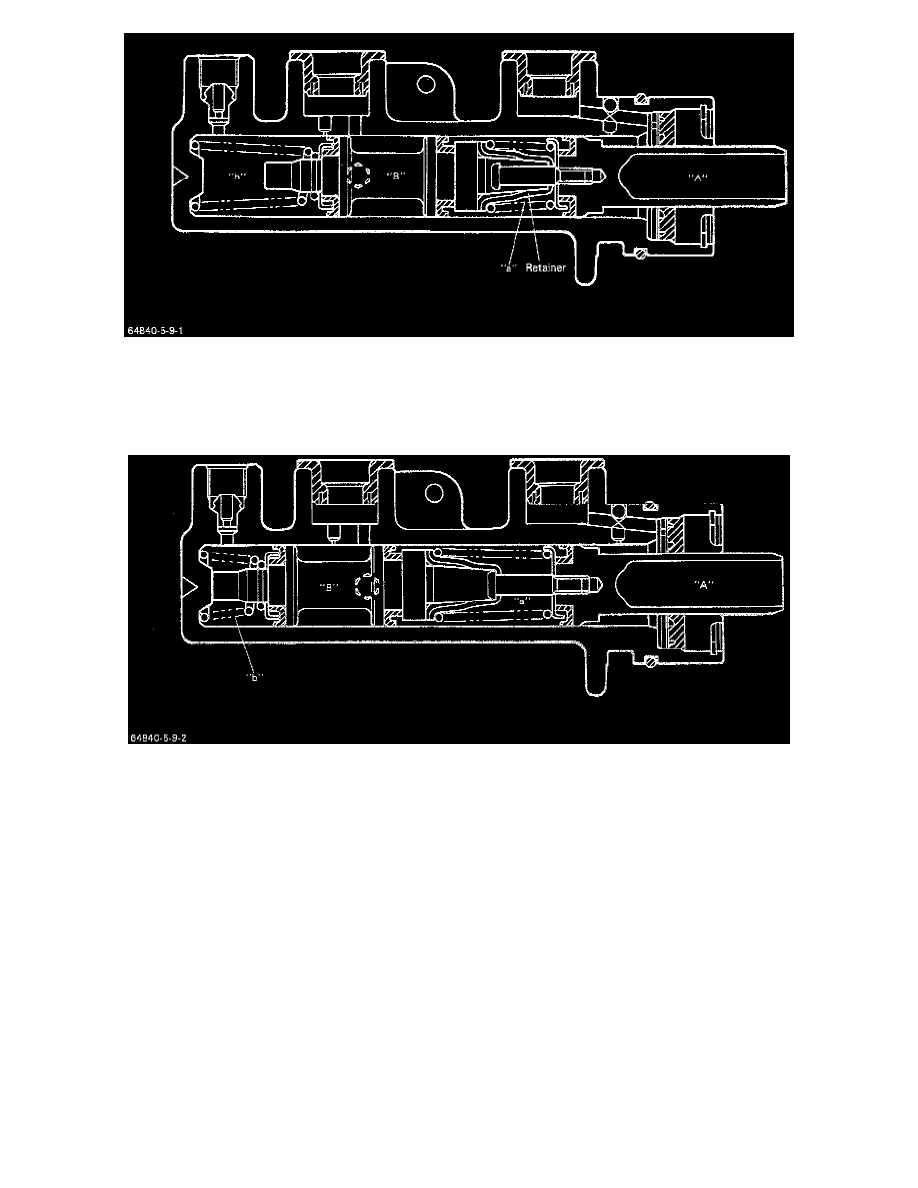Swift L4-1298cc 1.3L SOHC MFI (1997)

One-Circuit Operation (Primary Chamber "a" Circuit Failure)
Depressing the brake pedal forces the primary piston "A" to move as described previously, but since the brake circuit connected to the chamber
"a" cannot hold the pressure, no pressure is produced in the fluid immediately ahead of the piston "A". The piston "A" keeps moving while
compressing the spring and when it reaches the retainer, the piston "B" is pushed and begins to move. This causes the pressure to rise in the
chamber "b" and the pressure acts on the left front wheel brake and right rear wheel brake.
One-Circuit Operation (Secondary Chamber "b" Circuit Failure)
In this case, the leftward movement of the piston "A" has but little effect in causing the fluid pressure to rise in the chamber "a" in the beginning,
because the initial rise of the fluid pressure causes the piston "B" to promptly yield and move to the left. However, when the forward end of the
piston "B" comes to the head of the cylinder and stops there, the leftward movement of the piston "A" becomes effective. Thus the fluid pressure is
produced in the chamber "a" and it acts on the right front wheel brake and left rear wheel brake. The above image shows secondary piston "B" at
half.
